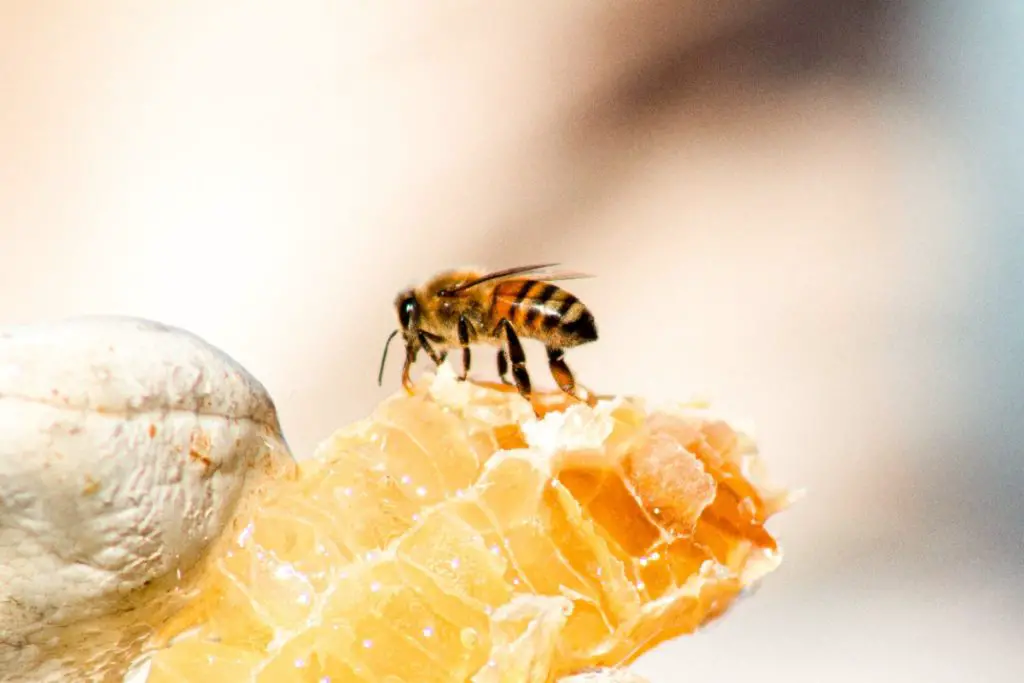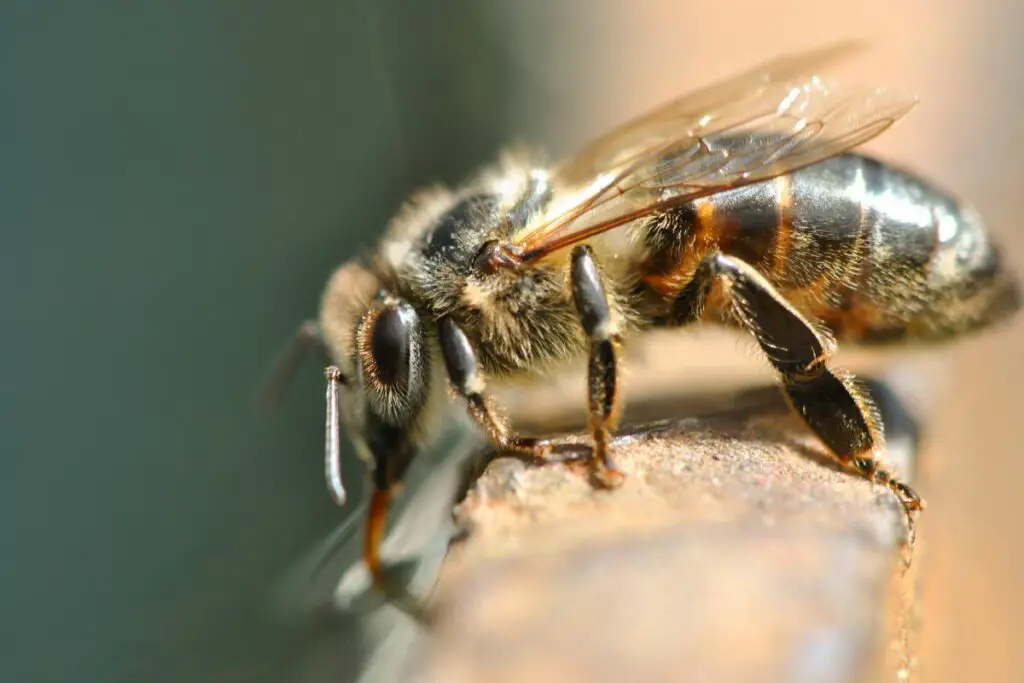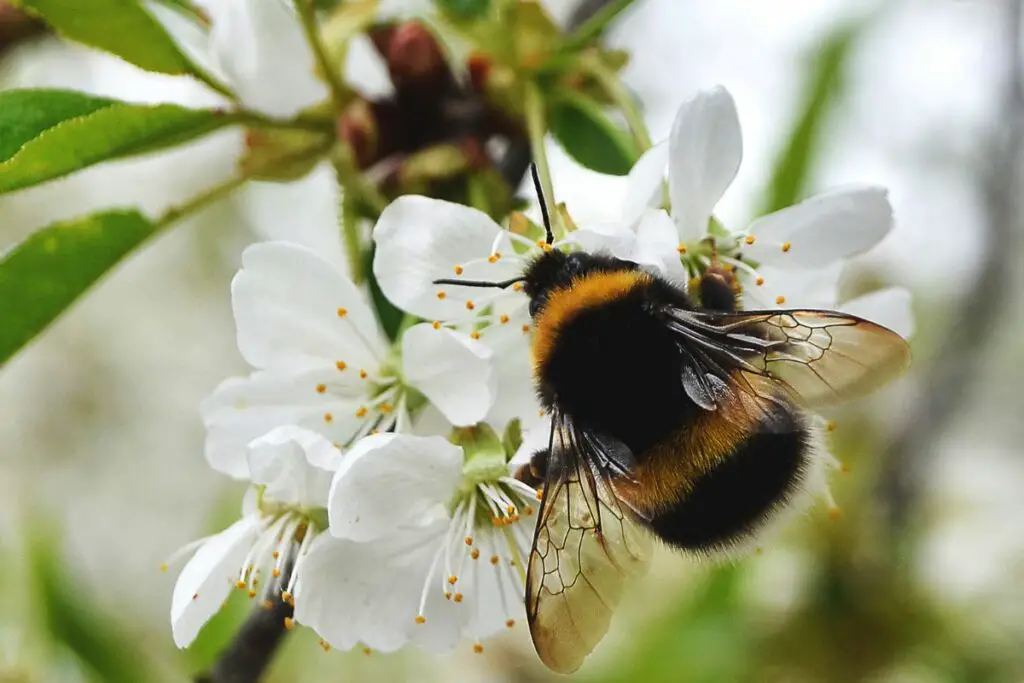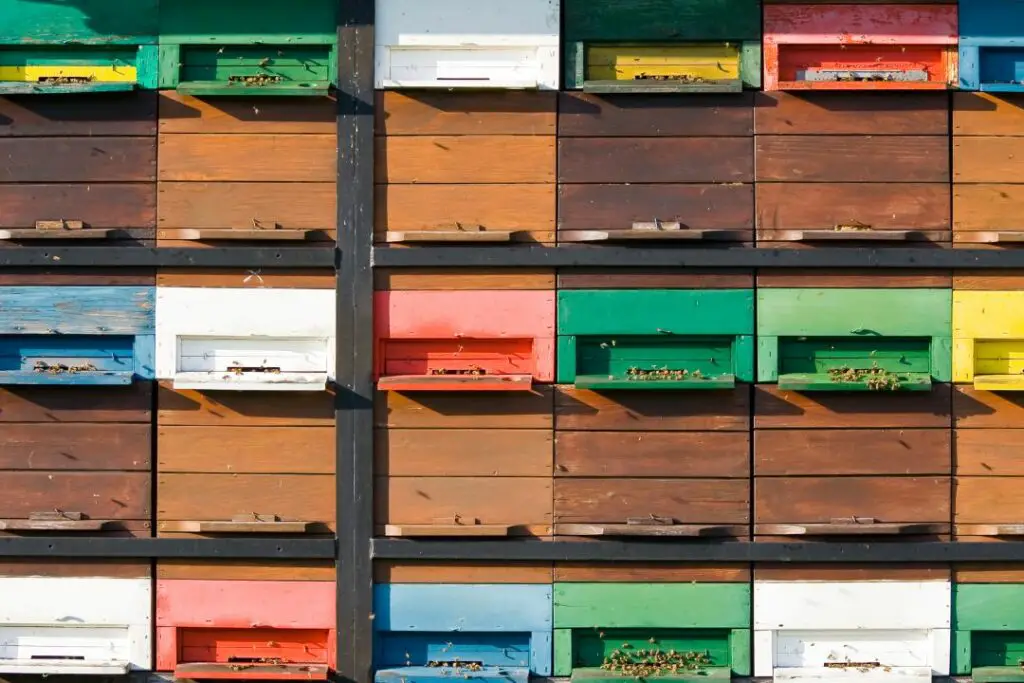Last updated on January 3rd, 2024 at 01:47 pm
Have you ever wondered how the delicious honey you spread all over your toast is made?
The short answer is that bees collect nectar from flowers, transform it with enzymes in their bodies, and then evaporate its water in the hive, turning it into honey.
Click here if you’d prefer to watch the video
Honey provides a perfect food source for long winters in the hive and has been a source of precious calories for other mammals for millions of years.
But the journey from flower to jar is much more, from bees’ amazing ability to seek out flowers to their even more ingenious honey-making process. Let’s look inside the hive to learn more about this fascinating process.
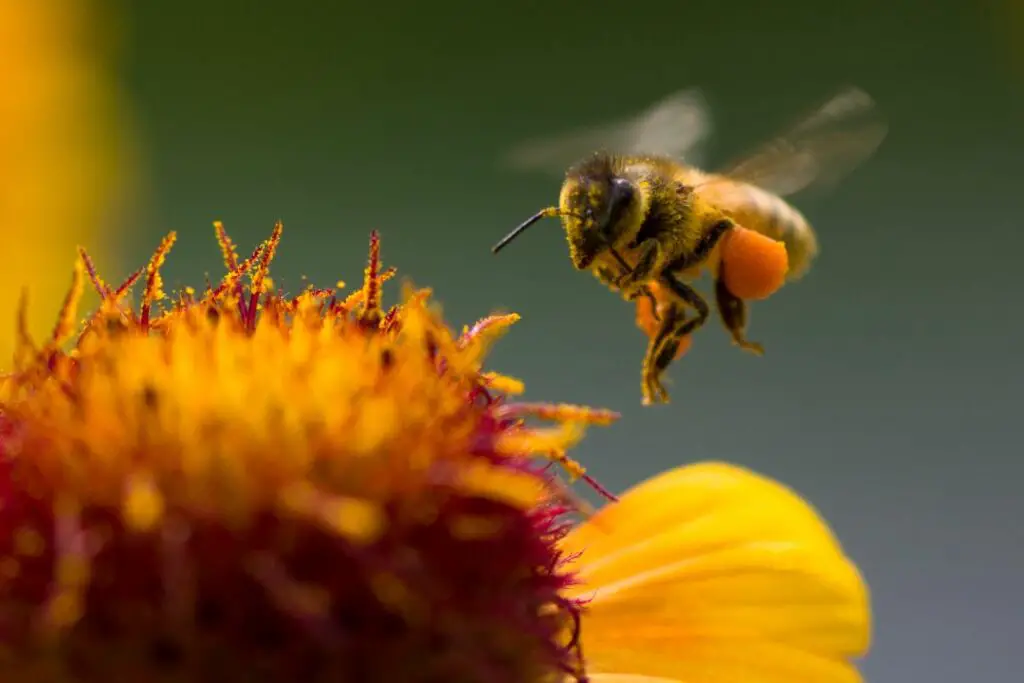
How Do Bees Locate The Best Flowers For Honey?
Female worker honeybees travel up to 5 miles around the hive, searching for flowers of all shapes and sizes. A healthy hive produces and consumes approximately 50kg of honey per year. So, the bees have quite the task ahead of them.
Bees are attracted to flowers by their bright colours and sweet fragrances. They use these senses of sight and smell to determine if a flower has enough nectar to make it worth harvesting.
But their vision goes ways beyond ours. They have a unique ability to detect ultraviolet light. Flowers emit ultraviolet light patterns like a map bees can follow to find the best flowers to forage.
Once a bee has found a good source of nectar, it will return to the hive and dance to communicate the location of the flowers to other bees. This dance is called the “waggle dance,” it tells other bees the distance, direction, and quality of the flowers they’ll find.
Locating flowers for nectar collection is vital for bees, requiring significant energy. Bees must visit thousands of flowers to collect enough nectar to make the honey they need.
Now we know how bees locate the best flowers for honey by using their senses of sight, smell, and ultraviolet light detection, let’s look at how they extract the sugary prize within.
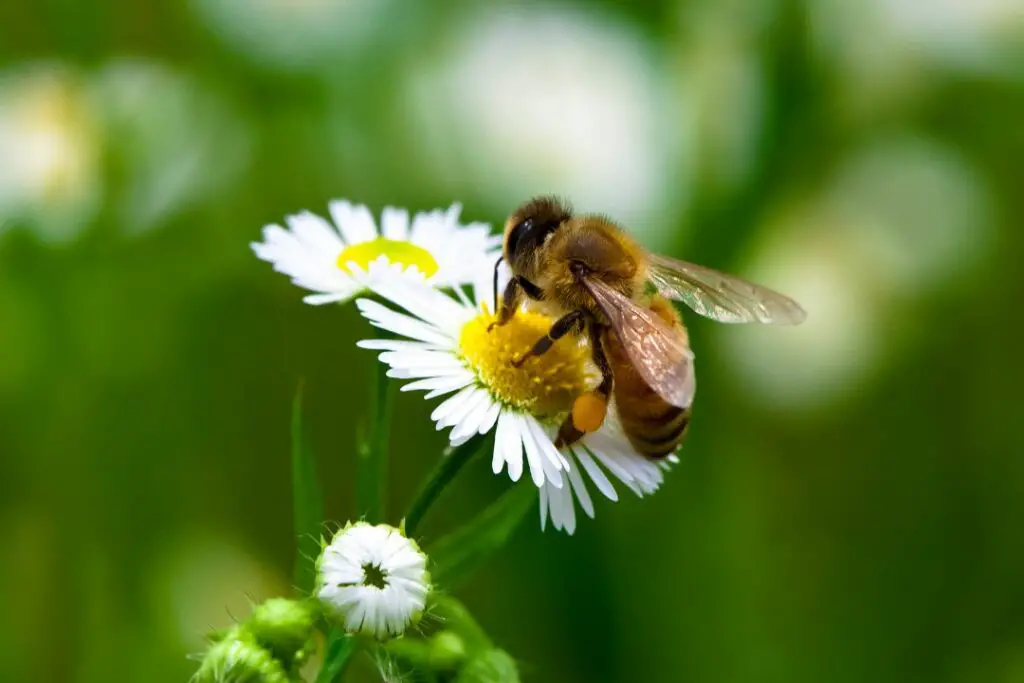
How Do Bees Collect Pollen & Nectar
When our eagle-eyed foragers see a suitable flower, they land gently on its petals or stems. Now it’s time to deploy their carefully evolved straw-like tongue to begin lapping up the nectar within.
Nectar
The worker bee’s proboscis is a marvel of evolutionary design. Bees use an elongated, flexible “tongue” to access nectar deep within flowers. But calling it merely a “tongue” doesn’t capture its complexity.
When a worker bee lands on a flower, it unfurls its proboscis. This structure is composed of two main parts: the glossa, which is tubular and hairy, and the labial palps, which help to channel the nectar.
As the bee extends its glossa into the nectar reservoir of a flower, its tiny hairs act like a sponge, absorbing the sweet liquid.
The bee then employs a combination of capillary action and muscle movements to draw the nectar up through the proboscis and either consume it for energy or place it into a special organ known as the honey stomach or crop for when the bee returns to the hive (more on this later).
Pollen
Pollen is a powdery substance consisting of tiny particles or grains, the male reproductive cells of flowers. Worker bees, equipped with specialized body structures, are nature’s most prolific pollen gatherers.
While collecting nectar, its body brushes against the flower’s anthers, where pollen grains are located. Its legs, particularly, are covered in fine hairs that trap these grains.
But it’s not all collected incidentally. Bees actively gather pollen using their legs, particularly their hind legs equipped with pollen baskets or corbiculae. These pollen baskets are slightly concave portions on the bee’s legs, surrounded by stiff hairs that hold the pollen in place.
To ensure the pollen sticks together and doesn’t fall out, the bee often mixes it with a tiny bit of nectar from its mouth, creating the compact pollen pellets you often see on the bee’s hind legs.
Back at the hive, these pollen pellets play a crucial role. They are a primary source of protein, fats, vitamins, minerals, and essential nutrients for adult bees and developing larvae.
Over time, the stored pollen ferments into “bee bread”, a symbiotic blend of pollen, bee saliva, and nectar or honey, which the colony can store and consume when needed.
*Additional reading – Have you ever wondered what would happen without bees? Find out how much of our food supply bees pollinate and how important they are to our survival.

Transporting Resources Back To The Nest Or Hive
As forager bees collect resources from flowers, they store them in specialized structures in their bodies. Nectar is stored in the honey stomach, while pollen is stored in the baskets on their hind legs.
Most of the nectar these busy bees collect goes into the honey stomach, which can hold up to 70 mg at a time. This cargo is then transported back to the hive, where it is regurgitated mouth to mouth by the worker bees until it reaches the processor bees.
This passing of nectar from bee to bee is how bees start to produce honey. The processor bees use the enzymes they regurgitate to break down the complex sugars in the nectar into simple sugars, starting the process towards raw honey.

How Do Honeybees Make Honey?
Honey is made when enzymes in the honey stomach break down the nectar’s sucrose into glucose and fructose, but this is just the beginning.
In its current liquid form, it’s still nowhere near the bee honey we all know and love. It must be severely dehydrated to take on the sticky, viscous form before it becomes honey.
House bees within the hive achieve this by fanning their wings over the honey to reduce the water content until it reaches around 18%. Once the honey reaches this level, it is considered ripe and ready for storage.
The bees’ ability to turn nectar into honey is crucial to survival. Honey is the bees’ main food source during the winter months when there are no flowers to forage. The worker bees will consume the honey to produce energy to keep the hive warm and continue their daily activities.
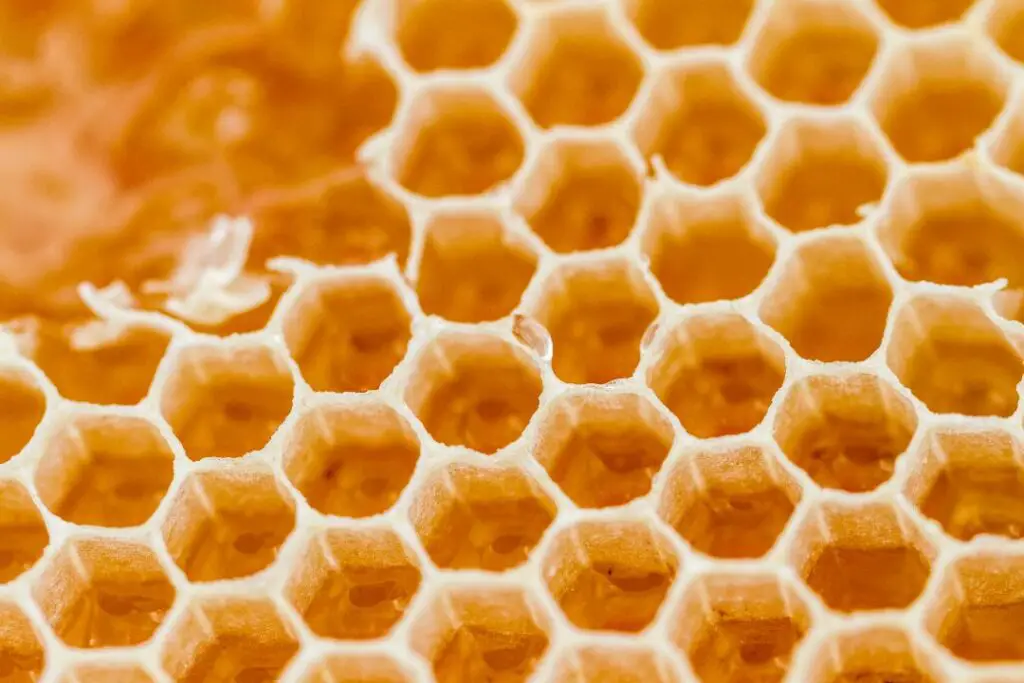
How Do Bees Store Honey & Keep It From Going Bad?
After honey bees have converted nectar into honey, they store it in honeycomb cells within the hive. The bees use beeswax to create these cells, which are hexagonal in shape and fit together like a puzzle.
The beeswax honey cells are sealed with a thin layer of wax known as capping. This capping helps to protect the honey from spoiling and indicates to a beekeeper that the honey is ready for harvest.
Capped honey can be kept almost indefinitely in the right conditions. The major risk is very humid weather when the honey can absorb moisture from the air and become too runny.
On the other hand, if the weather is particularly dry, the honey can crystallize and harden. In either case, the honey is still safe to eat and consume for humans and bees but may lose much of its flavour profile for you connoisseurs.
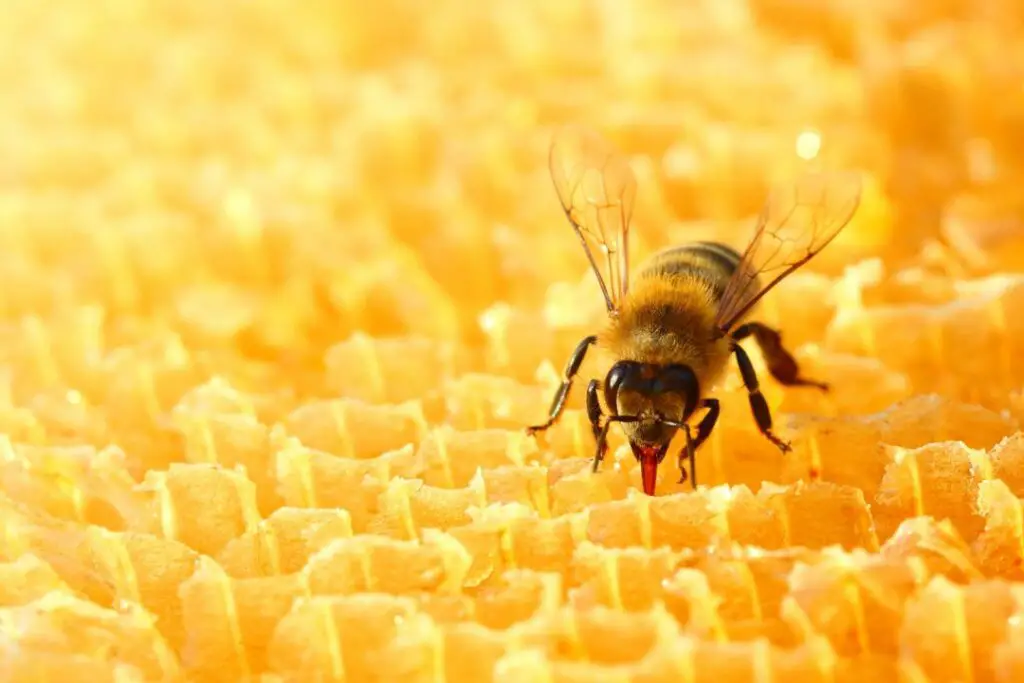
How Do Beekeepers Harvest Honey?
As beekeepers, we take great care to ensure our bees have enough honey to survive the winter. But we also want to harvest some of the delicious honey for our own use. Here’s how we go about it:
Removing the Honey Supers
First, we remove the honey supers – the boxes on top of the hive containing the honeycomb frames. We only remove the supers completely full of honey, leaving enough for the bees to eat during the winter.
Extracting the Honey
Next, we place the frames in an extractor – a machine that spins the frames around, separating the honey from the honeycomb. We then filter the finished product to remove any bits of wax or other debris.
Storing the Honey
Once the honey is extracted and filtered, we store it in containers. We typically use glass jars with airtight lids to keep the honey fresh. Some beekeepers prefer to leave a thin layer of wax on top of the honey to help preserve its flavour and colour.
Replacing the Honey Supers
After harvesting the honey, we return the empty frames to the supers and return them to the hives. The bees will clean up any remaining honey and wax and fill the frames with new honey during the next season.
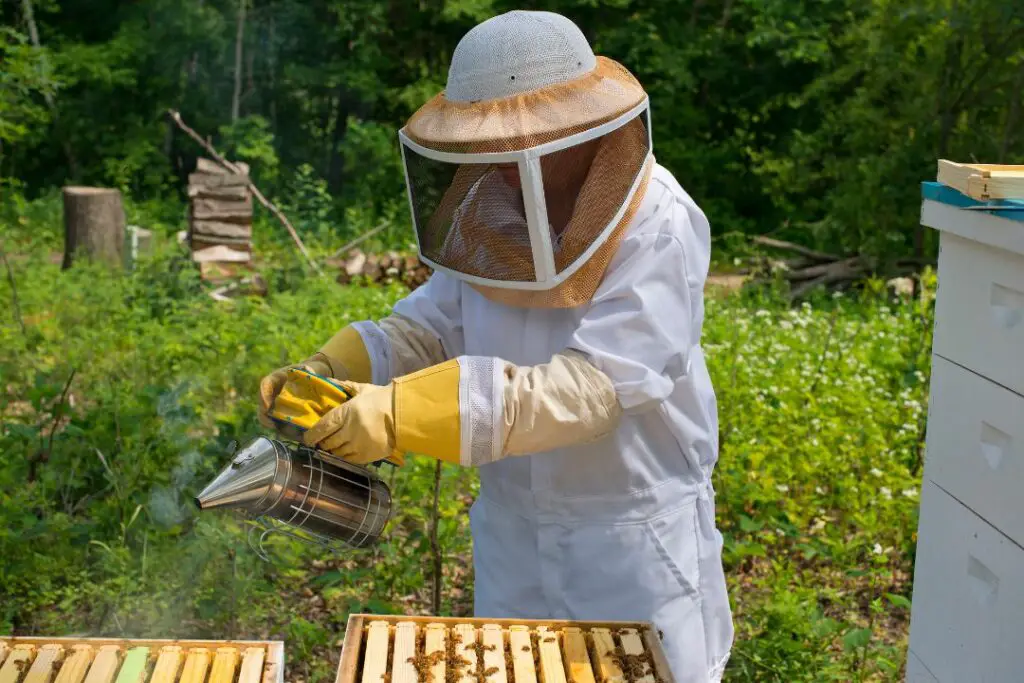
Frequently Asked Questions
Now we’ve gone from flower to jar, let’s look at some of the most common questions we hear about how bees make honey.
How do bees make Manuka honey?
Manuka honey is produced when honeybees collect nectar from the Manuka tree (Leptospermum scoparium), native to New Zealand and parts of Australia.
Manuka honey contains dihydroxyacetone in the nectar of Manuka flowers and methylglyoxal, contributing to the honey’s distinct and prized antibacterial properties.
Does the queen bee make honey?
No, the queen’s primary role within the hive is to lay eggs and maintain the colony’s population. Worker bees collect nectar, which they then convert into honey.
The queen bee relies on worker bees to feed her with a substance called “royal jelly” during her larval stage and a mixture of honey and “bee bread” (fermented pollen) when she’s an adult. The production, storage, and overall management of honey are tasks dedicated solely to the worker bees in the colony.
Are there different types of honey that are not made from nectar?
In South America, there is a lesser-known species of bee whose diet has strayed from the bees we normally consider. Vulture bees have evolved to feed on dead animals as their source of nutrition.
And yes, this colony of bees will produce honey! It’s known to have a much darker colour with a much thicker consistency, and no, we don’t recommend trying it.
Do all bees make honey?
There are over 20,000 known species of bees, but only a small fraction of them produce honey in quantities significant enough for humans to harvest. The most familiar honey-producing bee is the Western honey bee (Apis mellifera), but other species, like the Eastern honey bee (Apis cerana), also produce honey.
Solitary bees don’t live in large colonies and don’t need to store large amounts of food in honey. Instead, they might store a mixture of nectar and pollen as a food source for their larvae.
Do you need pollen to make honey?
No, honey is made primarily from nectar collected by bees from flowers. Pollen is not a required ingredient for honeybees to make honey.
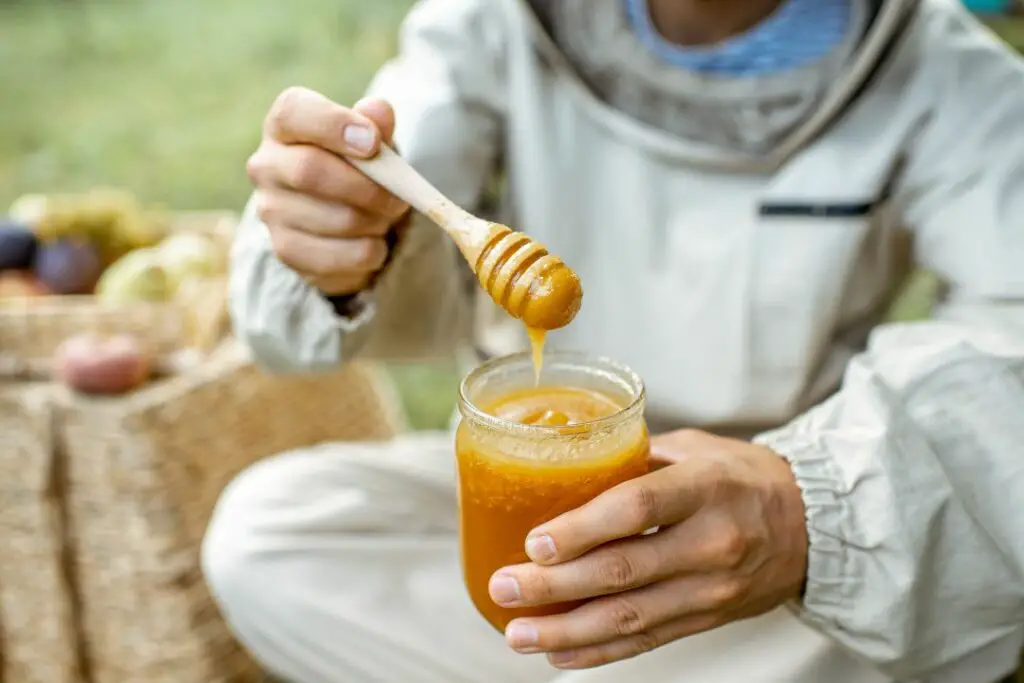
In Conclusion
Now you’ve seen the whole journey of honey, from a bee landing on a nectar-rich flower to the types of honey you’ll find on shop shelves worldwide.
Looking for more fascinating reads on the world of bees? Learn about the deadly bee diseases that beekeepers have to deal with to keep the inhabitants of their hives safe.
Or check out other great articles below, diving into the beautiful world of bees and pollination.

